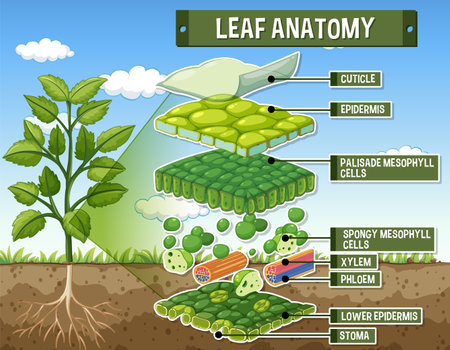Introduction to Foraging in Britain
Foraging for wild food is an age-old tradition in Britain, deeply woven into the fabric of rural and urban life alike. From the ancient woodlands of Scotland to the hedgerows of the English countryside, generations have relied on nature’s larder for both sustenance and culinary delight. Today, this practice is enjoying a renaissance, as more people seek to reconnect with nature, embrace sustainable living, and add seasonal variety to their diets. Before venturing out, however, it’s essential to approach foraging with respect and awareness. Always be certain about plant identification—mistakes can be harmful. Adhere to local guidelines and legislation; for example, under the Wildlife and Countryside Act 1981, it is illegal to uproot any wild plant without landowner permission. Take only what you need, leaving enough for wildlife and future foragers. Equipped with knowledge and mindfulness, foraging in Britain offers not just fresh ingredients but also an opportunity for mindful exploration and a deeper appreciation of our natural heritage.
Essential Foraging Safety and Identification Tips
Before setting out to forage the top 20 edible wild plants in Britain, it’s crucial to prioritise safety, proper identification, and respect for the environment. Here’s how to enjoy foraging responsibly and confidently:
Key Advice for Identifying Edible Wild Plants
The British countryside is brimming with diverse flora, but many edible species have toxic lookalikes. Accurate identification is essential. Always use a reputable field guide or an app focused on UK flora, and consult local experts when possible. If in doubt, do not consume the plant.
| Edible Plant | Common Lookalike(s) | Main Identification Tip |
|---|---|---|
| Wild Garlic (Ramsons) | Lily of the Valley | Crush leaves – wild garlic smells distinctly garlicky; lily of the valley does not. |
| Alexanders | Hemlock | Alexanders have yellow-green flowers; hemlock has purple-spotted stems and a musty smell. |
| Wood Sorrel | Clover | Wood sorrel has heart-shaped leaves and a sharp lemony taste. |
| Bilberry | Deadly Nightshade | Bilberries grow on low shrubs; nightshade berries are larger and glossier. |
Avoiding Toxic Lookalikes
- Check multiple features: Don’t rely solely on leaf shape or colour – check stems, flowers, scent, and habitat.
- Never eat unknown plants: Even small amounts of toxic plants can be harmful or fatal.
- Start with easy-to-identify species: Such as nettles or blackberries, before moving on to more challenging finds.
Respect Local Laws and Habitats
The UK has strict laws regarding wild plant collection. Under the Wildlife and Countryside Act 1981, some species are protected and must not be picked. Always forage sustainably—take only what you need, leave roots intact, and avoid rare or endangered species. Stick to public footpaths or areas where foraging is permitted and seek landowner permission if necessary.
Sustainable Foraging Checklist
- Pick only abundant plants; leave enough for wildlife and future growth.
- Avoid sites near roadsides or polluted watercourses.
- Tread lightly to minimise disturbance to habitats.
- If unsure about permissions, ask local authorities or check signage.
By following these guidelines, you can safely explore Britain’s edible wild bounty while protecting yourself and the environment for future generations.

3. Top 20 Edible Wild Plants in Britain
Britain’s countryside is a treasure trove of edible wild plants, each offering unique flavours and health benefits. Foraging for these natural delights is not only an excellent way to reconnect with nature, but also a wonderful means to enhance your daily meals with fresh, seasonal ingredients. Here’s a curated list of twenty of the most popular, easily identified, and widely available edible wild plants you might encounter during your rambles across British fields, woodlands, and hedgerows.
Nettles (Urtica dioica)
Despite their sting, young nettle leaves are a classic springtime green, perfect for soups or teas once blanched.
Wild Garlic (Allium ursinum)
Known for its pungent aroma, wild garlic’s leaves add a delicious garlicky note to pestos, omelettes, or salads.
Dandelion (Taraxacum officinale)
Every part is edible; leaves are great in salads or as cooked greens, while roots can be roasted for a coffee alternative.
Wood Sorrel (Oxalis acetosella)
The tangy, lemon-flavoured leaves liven up salads and make a refreshing herbal tea.
Elderflower (Sambucus nigra)
Fragrant elderflowers are ideal for making cordial or infusing into desserts during late spring and early summer.
Hawthorn (Crataegus monogyna)
The young leaves are sometimes called “bread and cheese” by country folk and can be nibbled straight off the branch; berries make excellent jellies.
Chickweed (Stellaria media)
This mild-tasting plant is a common find in gardens and hedgerows—perfect for tossing into salads or sandwiches.
Jack-by-the-Hedge (Alliaria petiolata)
Also known as garlic mustard, its leaves have a subtle garlic flavour and work well in sauces or as a sandwich green.
Wild Strawberry (Fragaria vesca)
Tiny but intensely sweet berries ripen in early summer; leaves can be dried for a gentle herbal tea.
Cow Parsley (Anthriscus sylvestris)
The lacy foliage has a mild parsley taste but take care—always positively identify this plant due to toxic lookalikes.
Sorrel (Rumex acetosa)
Sorrel adds a bright, tangy kick to soups and sauces; the young leaves are best for eating raw.
Bramble (Rubus fruticosus)
Better known as the blackberry bush; both the berries and young shoots are edible—the latter delicious when peeled and steamed.
Mallow (Malva sylvestris)
The soft, velvety leaves can be used like spinach, while the pretty mauve flowers brighten up any salad bowl.
Purslane (Portulaca oleracea)
This succulent plant is rich in omega-3 fatty acids and lends crunch to summer salads.
Sea Beet (Beta vulgaris subsp. maritima)
A coastal favourite with glossy dark green leaves that taste similar to spinach when wilted or steamed.
Wild Fennel (Foeniculum vulgare)
The feathery fronds and seeds impart an aniseed flavour—ideal for seasoning fish dishes or steeping into tea.
Meadowsweet (Filipendula ulmaria)
The creamy flower heads were once used to flavour mead; they add a honeyed note to puddings or cordials today.
Cress (Cardamine pratensis & Lepidium sativum)
Bankside cresses deliver peppery zing—perfect for adding punch to sandwiches or egg dishes.
Goosegrass (Galium aparine)
The sticky stems can be steamed as a green vegetable or infused in water for a traditional cleansing drink.
Sloes (Prunus spinosa)
The tart berries of blackthorn bushes are best known for flavouring sloe gin; they also make deeply flavoured jams after the first frost softens them up.
4. How to Harvest and Prepare Wild Plants
Foraging for wild edible plants in Britain can be both rewarding and sustainable, but it’s important to follow responsible harvesting practices and to prepare your finds properly for safe consumption. Here’s a practical guide that captures the rhythm of British countryside living, while ensuring you enjoy the health benefits these plants offer.
Foraging Responsibly
Always forage with care and respect for the environment. Choose locations away from pollution, avoid over-harvesting, and use a good field guide to confirm identification. Make sure you have landowner permission where required, and only pick what you are certain is safe and legal to eat.
Key Foraging Principles
| Guideline | Description |
|---|---|
| Leave No Trace | Pick selectively; never uproot entire plants. |
| Seasonal Awareness | Harvest at the right time for peak flavour and nutrition. |
| Legal Considerations | Follow the Wildlife and Countryside Act; don’t disturb protected species. |
| Sustainable Picking | Take no more than you’ll use, leaving enough for wildlife and regrowth. |
Cleaning Your Wild Harvest
After gathering, rinse all wild greens, flowers, or roots under cool running water to remove dirt and insects. Some foragers soak leaves in salted water briefly to draw out any tiny pests. Pat dry with a clean tea towel or use a salad spinner. For roots like dandelion or burdock, scrub thoroughly with a brush.
Preparing Wild Plants for Cooking
The traditional British approach often includes simple preparations that allow the natural flavours of wild foods to shine, while modern twists bring creativity into the kitchen. The table below offers suggestions for some common wild edibles:
| Wild Plant | Traditional Use | Creative Ideas |
|---|---|---|
| Nettles | Nettle soup, steamed as greens | Nettle pesto, added to risotto or smoothies (blanch first!) |
| Dandelion Leaves | Add to spring salads, wilted as a side dish | Dandelion kimchi or blended in green juices |
| Wild Garlic (Ramsons) | Pesto, mixed into mash or omelettes | Baked into focaccia, whizzed into aioli or dips |
| Elderflowers | Cordial, fritters, infused vinegar | Baked in cakes, used in gin infusions or sorbet |
| Sorrel | Sorrel soup, added to egg dishes | Muddled in cocktails, pureed as sauce for fish dishes |
| Hawthorn Berries | Jelly, fruit leathers | Baked into flapjacks or simmered in chutneys with apples and spices |
| Chickweed | Tossed in salads or sandwiches | Pulsed into fresh salsa verde or blitzed into herby butter spreads |
| Mallow Leaves & Flowers | Mallow tea, cooked as greens in stews | Mallow leaf wraps filled with grains and herbs |
A Few Preparation Tips:
- Nettles: Always wear gloves when harvesting; cooking or drying neutralises their sting.
- Elderflowers: Shake gently to remove insects before using; avoid washing as this reduces their fragrance.
- Berries: Remove seeds from hawthorn berries before cooking due to their hardness.
The beauty of British wild plants lies not just in their nutritional value but also in the connection they foster between people and place. With each carefully harvested handful, you’re weaving local tradition into your daily meals—an act that nourishes both body and soul.
5. Potential Health Benefits and Culinary Uses
Nutritional Value of Wild Plants
Britain’s wild edible plants are an impressive source of essential nutrients, often packing a more powerful punch than their cultivated counterparts. Nettles, for example, are rich in iron, calcium, and vitamins A and C, making them a brilliant choice for supporting energy levels and immunity. Dandelion leaves offer a boost of potassium and antioxidants, while wild garlic is renowned for its antibacterial properties and vitamin C content. Incorporating these plants can help diversify your diet and provide phytonutrients that support overall wellbeing.
Wellbeing Benefits for Body and Mind
The benefits of Britain’s wild edibles extend beyond physical nutrition. Foraging itself encourages mindfulness and connection with nature, which has proven mental health perks. Consuming wild greens like chickweed or sorrel delivers gentle detoxifying effects, supports digestive health, and may even reduce inflammation due to their antioxidant compounds. Many wild berries—such as elderberries and bilberries—are loaded with flavonoids that contribute to heart health and may help bolster the immune system during colder months.
Everyday Culinary Uses
Incorporating wild plants into everyday cooking is surprisingly simple. Young nettle leaves make an excellent addition to soups or risottos (just remember to cook them first to remove the sting). Dandelion leaves can be tossed through salads or blended into pestos for a peppery kick. Wild garlic brings a mellow garlicky flavour to omelettes, breads, or homemade butters. Try adding hawthorn berries to chutneys or jellies, or sprinkle chopped sorrel into scrambled eggs for a refreshing tang. These local ingredients not only elevate your meals but also connect you with traditional British flavours rooted in the landscape.
Practical Tips for Enjoying Wild Edibles
- Start small: Introduce one new plant at a time to learn its taste and how your body responds.
- Mix with familiar ingredients: Combine wild herbs with classic British staples such as potatoes or root vegetables.
- Preserve seasonal finds: Dry herbs like yarrow or mint for year-round use in teas or seasoning blends.
Final Thoughts on Nourishing with Nature
Exploring Britain’s top edible wild plants offers more than just sustenance—it’s an invitation to embrace the rhythms of nature, support holistic wellbeing, and rediscover forgotten culinary traditions. With mindful harvesting and creative preparation, these natural treasures can become a vibrant part of your daily diet.
6. Sustainable Foraging and Respect for Nature
Foraging for wild plants in Britain is a wonderful way to reconnect with nature, discover the flavours of the countryside, and add diversity to your diet. However, it’s vital to approach this age-old tradition with mindfulness and respect. Our green spaces are shared treasures; their long-term health depends on how we treat them today.
Mindful Gathering: Take Only What You Need
When harvesting edible wild plants, always follow the golden rule: take only what you need. Leave plenty behind for wildlife and for the plants themselves to regenerate. This simple act ensures that hedgerows, woodlands, and meadows remain lush and vibrant for years to come.
Protecting Local Ecosystems
Every plant plays a role in its ecosystem. Over-foraging can upset the balance and threaten local species. Stick to common, abundant plants from your “Top 20 Edible Wild Plants in Britain” list, and avoid picking rare or protected species. Always check local guidelines and never forage from Sites of Special Scientific Interest (SSSIs) or nature reserves without permission.
Respecting Shared Spaces
The British countryside is enjoyed by many—walkers, cyclists, families, and fellow foragers alike. Tread carefully, close gates behind you, and leave no trace of your visit. If you’re new to foraging, consider joining a guided walk or workshop to learn best practices from experienced locals.
Cultivating a Balanced Relationship with Nature
Sustainable foraging isn’t just about preservation; it’s about fostering a deeper connection with the land. With every nettle leaf picked or elderflower gathered, we become more attuned to seasonal rhythms and our place within the natural world. By practicing thoughtful, responsible foraging, we ensure that both today’s enthusiasts and future generations can continue to enjoy Britain’s wild bounty.


